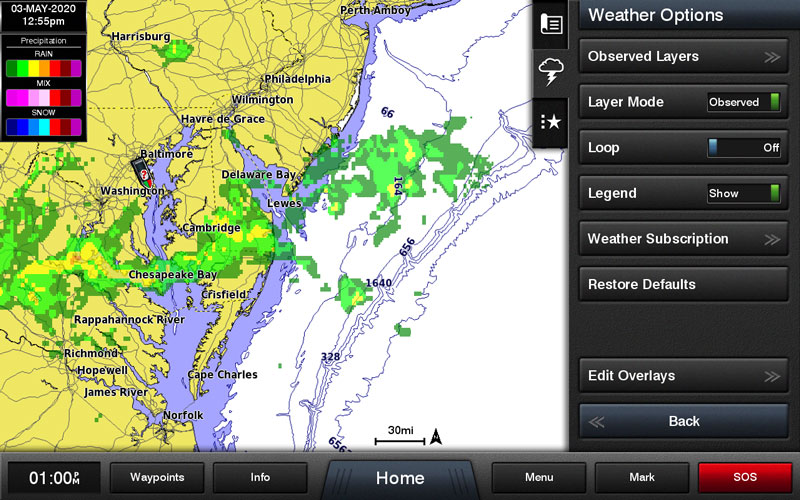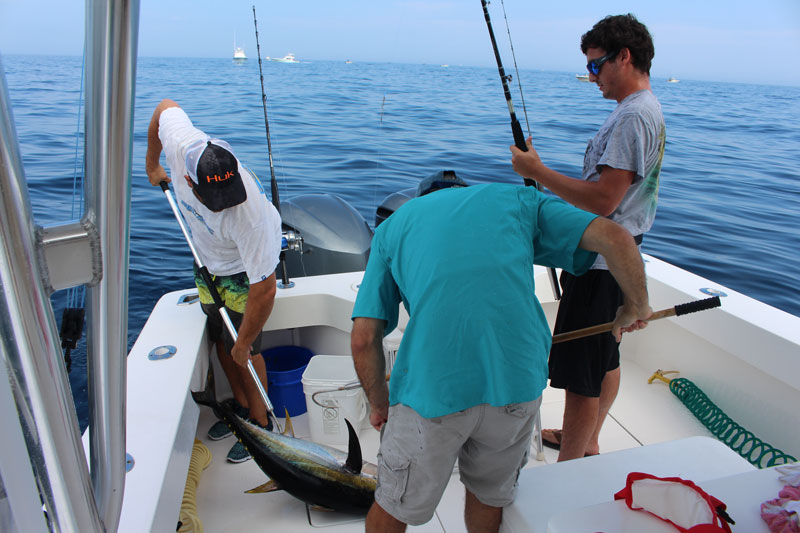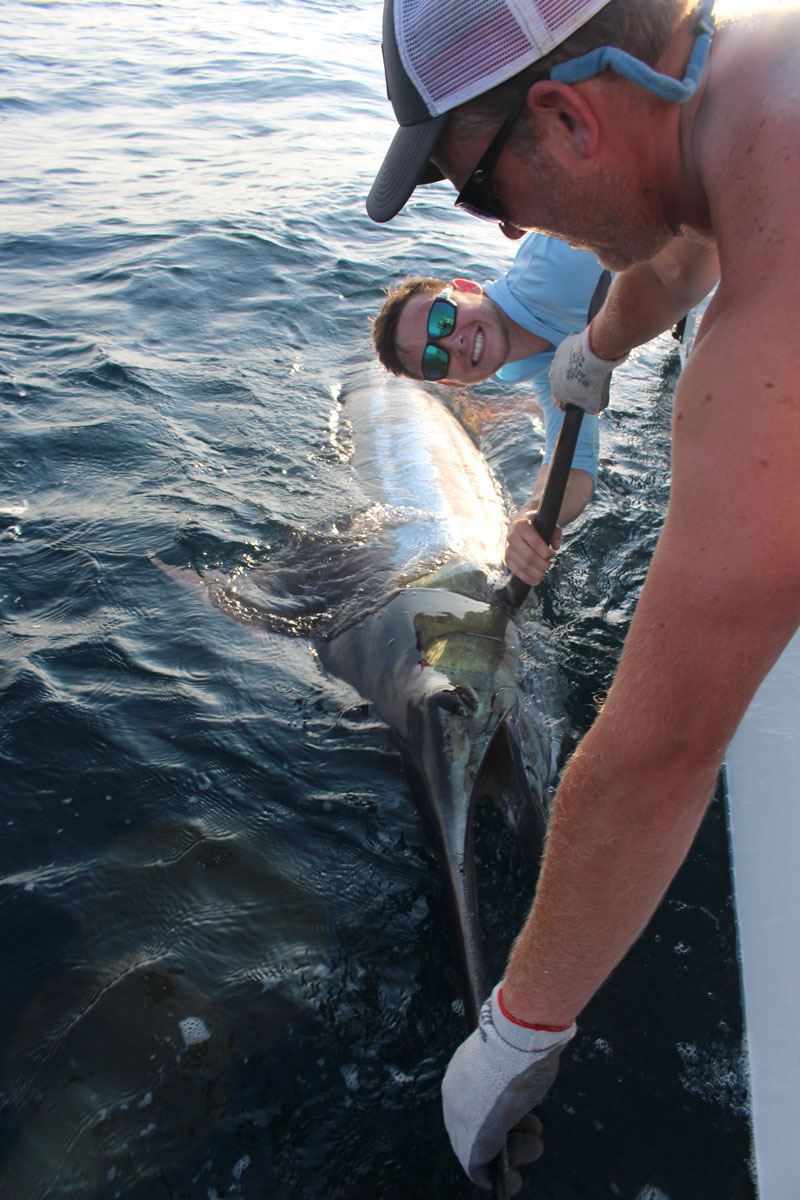Presented by Sirius XM Marine
When you’re going to spend an afternoon at the lake or a morning Chesapeake Bay fishing, naturally you want to catch fish. But when you’re heading offshore it means spending hours of prep, gobs of cha-ching, every hour of daylight (and then some!) cruising and fishing, and then hours cleaning up from the adventure. The investment is so substantial, catching fish becomes all that much more critical. Unfortunately, you can’t ever insure a good catch — or for that matter a single strike. But you can stack the deck in your favor, and one key way to do so is with good intel. We think the number-one way of gathering solid fishing intel in our area is by checking the FishTalk fishing reports. (You knew we were going to lead off with that one, right?) Of course, we also think this is self-evident. So, in addition to keeping up to date with the reports here are five top ways you can develop intel and use it to your advantage for your next offshore fishing foray.

- Watch the Weather – If the weatherman is calling for flat seas, great. But in all other conditions, you should think of weather info as a type of fishing info that goes beyond just making the go/no-go decision first thing in the morning. This has to do with both how you’ll fish and where. Consider, for example, if there’s going to be a breeze blowing out of the south and all indications are that the fish are somewhere in the vicinity of Poormans Canyon. Instead of heading for the center of the canyon, it might be smart to head slightly south of the southernmost point you want to try. When you get there, start trolling north and you’ll have the seas behind you as you set the spread. That will make it easier on everyone involved and if it takes a couple of hours to locate fish you won’t already be beat to a pulp or soaked to the skin when it happens. If you don’t have a destination in mind, running into a sea in the morning can be a good move simply because a long ride home in a head sea can be miserable. If chunking is in the plans, rough seas can mean the difference between anchoring up and drifting, so you’ll want to rig up accordingly. The 50-footers don’t have to worry too much about this stuff but for most of us, calculating weather intel into the gameplan can make the difference between a great day and a miserable one. And while we all have our own favorite weather forecast services, remember that this is an area where having SiriusXM marine weather on your boat gives you a serious leg up. You can get up to date weather conditions and updated forecasts while you’re out in the middle of the ocean and change plans on the fly as necessary, rather than depending on what you saw the night before. The awareness and confidence it gives you by being able to track storms and lightning strikes right on the MFD may be the most critical advantage of this weather intel, but the system counts when it comes to boosting the catch rate, too.
- Spread the Wealth – Don’t go to one tackle shop and get all your stuff the day before a trip, go to a bunch of different tackle shops. Buy your leaders and crimps at one, get your skirts and lures at another, and buy your baits at a third. Each time, strike up a conversation at the counter and with other anglers you bump into. And don’t start these conversations by asking “where’s the hot bite?” That only invites an attitude. Instead, begin by saying you’re thinking about going to X canyon or Y lump and see what kind of response you get. Getting solid intel out of other anglers can be like pulling teeth when you ask directly about hotspots, but fishermen love to give their two cents when presented with questions.

With all those boats in the background you know the memo got out. But, did you get it? -
Get Walking – This isn’t doable if you’re trailering to the inlet from far away in the early morning hours, but if at all possible, walk the area docks between 4 p.m. and 6 p.m. when most of the boats that were out fishing are returning to the slip. If you see bloody water pumping out of a through-hull fitting or tuna being tossed out of the box, strike up a conversation. Again, directly asking where someone was is not a great idea. It’s better to fish for the intel than to demand it, and if someone doesn’t offer anything up out of the goodness of their heart, they probably would have led you astray if asked directly, anyway. Note: unless you have an established relationship with a fulltime captain, your luck is bound to be better if you spend your time chatting with recreational anglers as opposed to professionals. Other recreational anglers won’t necessarily be going out the very next day, and thus are likely to be a bit less tight-lipped. For this reason a visit to the local boat ramp can be even more productive than heading for high-dollar marinas with big boats in the slips.
- Get the Tech – There are boats running around out there with the ability to tap into SST, plankton fronts, and even weedline data in near-real-time. They can even overlay it on their chartplotter, and go directly to the breaks and fronts that hold the fish. Are you on one of those boats? If not, note that SiriusXM Marine can pipe all that data and more into your helm via satellite whether you’re running Garmin, Furuno, Simrad, or Raymarine. Their Fish Mapping service can also deliver the areas recommended by an oceanographer’s analysis and tailored for specific gamefish species.
- Collate the Data – After doing as much of the above as possible, sort through that intel. You can be sure some of the dock talk you hear is old, some of it is exaggerated, and some could even be intentionally false. You don’t want to stake your day on any one source, but on general consensus and the data-driven factors. Then you can make a reasonable game plan.
There’s nothing easy about gathering fishing intel — just ask our reports editor Dillon, and we’re sure he could give you an earful. Work at it, however, and your chances of success will go up. And with a little bit of luck that huge angling investment you’ve made will pay off.
Facebook Fishing Follies
When it comes to gathering fishing intel on social media, our honest advice is to do your best to completely block it out of your consciousness. Not only is it rife with misinformation and disinformation, social media also magnifies success and minimizes reality. You might see a glorious post with pics of a monster fish from Spot X, but there could have been 100 other boats at the very same spot which struck out — and you’d never know it. Worse, the character doing the posting might not even know exactly where Spot X is, and in reality may have been fishing at Spot Y. Or they could be a “black hat” trying to spread misinformation. Just ignore all that noise, and you’ll be better off.

